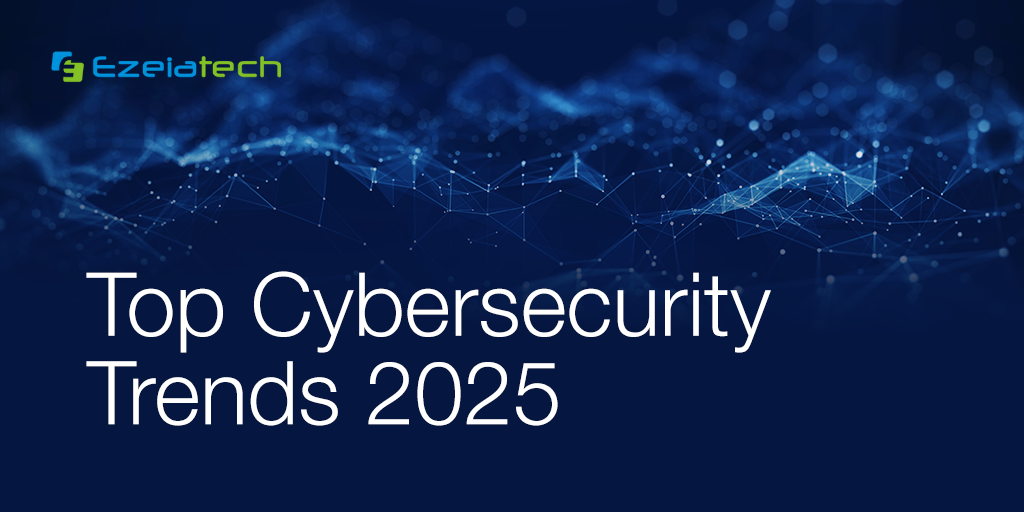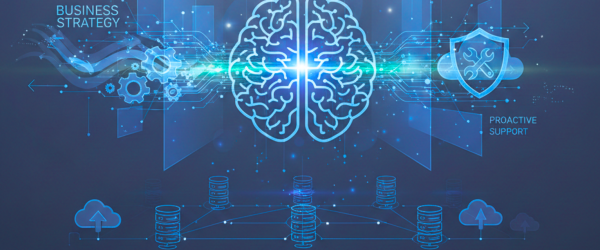
As digital transformation accelerates, so do the threats lurking in cyberspace. From state-sponsored attacks to AI-generated phishing scams, the cybersecurity landscape in 2025 is more dynamic—and dangerous—than ever before. According to Cybersecurity Ventures, the global cost of cybercrime is expected to reach a staggering $10.5 trillion USD annually by 2025, up from $3 trillion in 2015.
For IT professionals, business leaders, and even everyday users, understanding what’s coming next is essential. Here’s a deep dive into five cybersecurity trends defining 2025, and how you can stay ahead of them.
1. AI-Powered Cyber Attacks: Automation Meets Malice
Artificial Intelligence (AI) has been a boon for cybersecurity, but in 2025, it’s also one of the biggest threats. Cybercriminals are increasingly using AI to automate attacks, evade detection, and generate convincing social engineering content.
In particular, Generative AI tools like ChatGPT and others have enabled attackers to craft hyper-personalized phishing messages, bypassing traditional spam filters and fooling even savvy users. These AI-generated attacks are faster, more scalable, and more dangerous.
A report from IBM Security revealed that organizations leveraging AI and automation experienced an average cost savings of $1.76 million per breach compared to those without.
💡 What You Can Do:
- Implement AI-powered threat detection and response tools.
- Use behavior analytics to identify anomalies in user activity.
- Train staff to recognize AI-crafted phishing attempts.
2. Zero Trust Architecture (ZTA): No One Gets a Free Pass
The concept of Zero Trust—“Never trust, always verify”—has evolved from a buzzword into a cybersecurity necessity. In 2025, it’s a core framework adopted by businesses and government agencies alike.
With perimeter-based security now outdated due to cloud computing and remote work, Zero Trust Architecture (ZTA) ensures that every user, device, and application is authenticated continuously.
The U.S. Federal Government’s Executive Order 14028 made it mandatory for all agencies to implement Zero Trust frameworks by the end of 2024. This move has driven widespread adoption in the private sector in 2025.
💡 What You Can Do:
- Start by implementing Multi-Factor Authentication (MFA) across all systems.
- Enforce least-privilege access policies.
- Use identity and access management (IAM) tools for dynamic access control.
3. Quantum Computing: The Encryption Killer
While quantum computing offers transformative potential for industries like healthcare and logistics, it poses a serious threat to current encryption standards. In 2025, the cybersecurity industry is bracing for the possibility of quantum decryption, where quantum machines can crack RSA and ECC encryption algorithms in seconds.
The National Institute of Standards and Technology (NIST) is working on post-quantum cryptographic standards, with final selections expected to be widely adopted soon.
A World Economic Forum (WEF) report found that 20% of cybersecurity leaders are already investing in quantum-safe cryptography to future-proof their systems.
💡 What You Can Do:
- Monitor updates from NIST on post-quantum cryptography standards.
- Begin transitioning to hybrid encryption models.
- Audit your data and prioritize protection for long-lifecycle assets.
4. Ransomware-as-a-Service (RaaS): Crime-as-a-Subscription
In 2025, Ransomware-as-a-Service (RaaS) has matured into a multi-million dollar black-market industry. Cybercriminals no longer need coding skills—anyone can subscribe to ransomware kits and launch attacks in minutes.
What makes RaaS particularly dangerous is its business model: RaaS operators take a percentage of the ransom payout, while affiliates handle distribution. This scalability is causing a spike in attacks across small to medium businesses (SMBs), healthcare, education, and even government sectors.
According to Cybersecurity Ventures, ransomware damages are expected to cost $265 billion annually by 2031, with attacks happening every 2 seconds.
💡 What You Can Do:
- Back up data regularly using immutable storage.
- Use endpoint detection and response (EDR) solutions.
- Simulate ransomware attacks as part of your incident response plan.
5. Cloud Security Takes Center Stage
As businesses migrate more operations to the cloud, cloud misconfigurations, identity theft, and unsecured APIs have become leading vulnerabilities. In 2025, with hybrid work models being the norm, securing cloud infrastructure is a top priority.
A Gartner report predicts that by 2025, 99% of cloud security failures will be the customer’s fault, primarily due to mismanagement, poor configurations, and lack of visibility.
Cloud-native tools like Cloud Security Posture Management (CSPM) and Cloud Workload Protection Platforms (CWPPs) are now essential for enterprises.
💡 What You Can Do:
- Perform regular cloud security audits and assessments.
- Enforce role-based access control (RBAC).
- Invest in cloud visibility and governance tools.
Final Thoughts: Stay One Step Ahead
In the ever-evolving digital landscape, cybersecurity in 2025 is about predictive defense, automation, and zero tolerance for vulnerabilities. The shift from reactive to proactive security strategies is essential to protect business continuity and maintain customer trust.
Here’s a quick recap of the 5 trends:
| Trend | What’s Happening | What to Do |
|---|---|---|
| AI-Powered Attacks | Smart attacks using AI tools | Deploy AI-based defense systems |
| Zero Trust Architecture | Continuous verification is key | Use MFA, IAM, and least privilege |
| Quantum Threats | Encryption at risk | Move toward quantum-safe crypto |
| RaaS | Subscription-based cybercrime | Backup data, use EDR, prepare IRPs |
| Cloud Security | Misconfigurations at fault | Audit, secure APIs, apply governance |
Bonus: Free Tools to Help You Stay Cyber-Ready
- 🔍 Have I Been Pwned – Check if your credentials have been leaked.
- 🔐 VirusTotal – Scan files and URLs for malware.
- 🕵️ Shodan – Monitor exposed devices on the internet.
Final Words
Cybersecurity is no longer just an IT concern—it’s a boardroom discussion. Businesses and individuals that prioritize digital resilience will not only survive but thrive in this new cyber age. By staying informed, updating your security stack, and fostering a security-first culture, you can ensure that 2025 doesn’t catch you off guard.
“The best way to predict the future is to secure it.”






